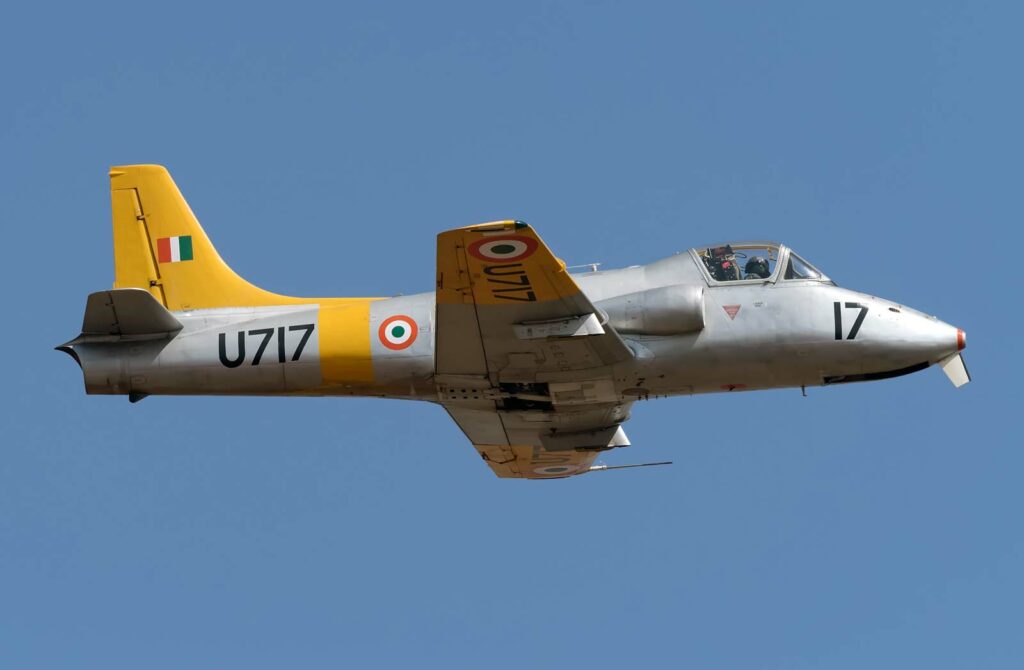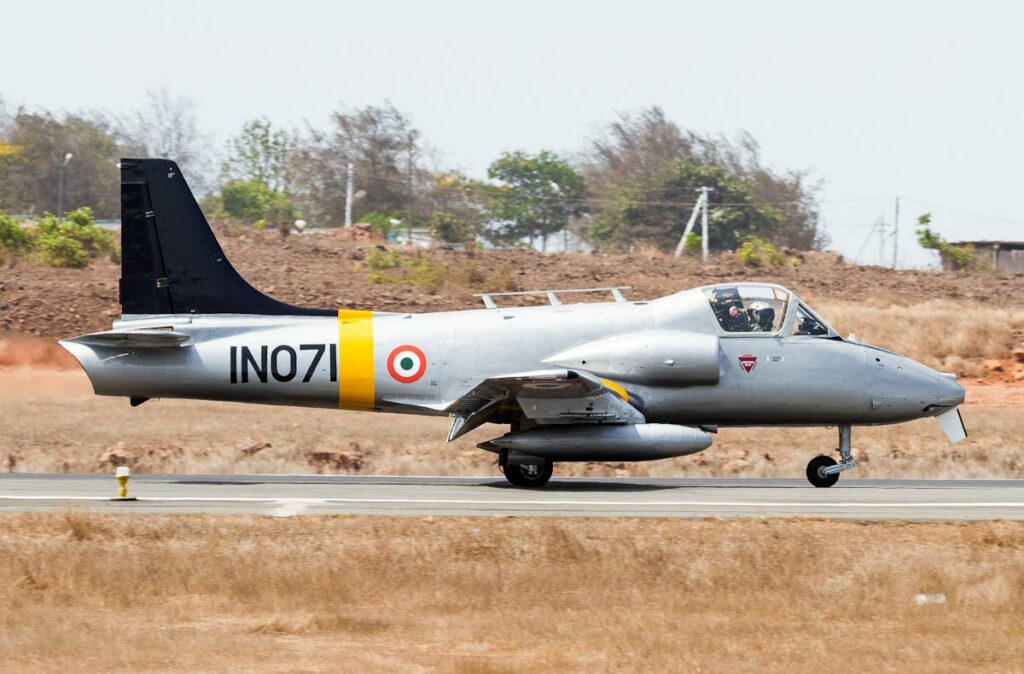Indian intermediate jet trainer with optional light attack capabilities, known for its reliability and service in the Indian Air Force and Navy.
In brief
The HAL HJT-16 Kiran, developed by Hindustan Aeronautics Limited (HAL), is a two-seat intermediate jet trainer aircraft, which later evolved to include light attack roles. It was primarily used by the Indian Air Force and the Indian Navy for pilot training, with features accommodating armaments for light attack duties. The aircraft is powered by a Rolls-Royce Viper turbojet engine, ensuring a balance between performance and reliability, conducive to training and intermediate flight instruction.

History of the Development of the HAL HJT-16 Kiran (Ray of Light)
The development of the HAL HJT-16 Kiran was initiated to meet the Indian Air Force’s need for an indigenous intermediate jet trainer in the early 1960s. The project underscored India’s aim to cultivate an independent aerospace industry, moving away from reliance on foreign aircraft. The Kiran, meaning “Ray of Light” in Sanskrit, made its first flight on September 4, 1964, and was introduced into service in 1968, following the design and development phase led by HAL in Bangalore. It was designed to bridge the gap between basic propeller-driven trainers and high-performance jets, such as the MiG-21.
Design of the HAL HJT-16 Kiran (Ray of Light)
The Kiran’s design is characterized by its unswept, low-mounted wings, a single engine, and a tricycle landing gear, making it suitable for its training role. It was initially equipped with the Rolls-Royce Viper turbojet engine and later versions saw enhancements like additional hardpoints and an upgraded engine in the Mk II variant. The aircraft’s structure was designed to be robust and forgiving, suitable for the rigors of pilot training.
Performance of the HAL HJT-16 Kiran (Ray of Light)
The Kiran showcases a max speed of 695 km/h at sea level, with a service ceiling of 9,150 meters. Its design facilitates a dual role of training and light attack, evidenced by its capacity to carry armaments like bombs, rocket pods, and gun pods. Its performance is aligned with its role as a trainer, providing a reliable platform for pilots transitioning to faster, more complex aircraft.
Variants of the HAL HJT-16 Kiran (Ray of Light)
There are primarily three variants of the Kiran: the Mk I, the Mk IA (with added armament capabilities), and the Mk II, which featured an improved engine and weapon systems. Each variant was tailored to meet specific training or light attack requirements, with the Mk II offering enhanced performance and armament options.

Military Use and Combat of the HAL HJT-16 Kiran (Ray of Light)
The Kiran has been extensively used by the Indian Air Force and the Indian Navy, playing a crucial role in pilot training. It was also employed by aerobatic teams like the Surya Kiran. The aircraft’s operational history underscores its reliability and versatility, contributing significantly to India’s defense training capabilities. Additionally, India donated Kirans to the Myanmar Air Force, showcasing the aircraft’s enduring utility and operational value.
The HAL HJT-16 Kiran stands as a pivotal project within India’s aerospace industry, illustrating the country’s commitment to developing indigenous military aviation capabilities. Its long service life, adaptability, and role in training generations of pilots underscore its significance in the annals of Indian aviation history.
Back to the Trainers section.